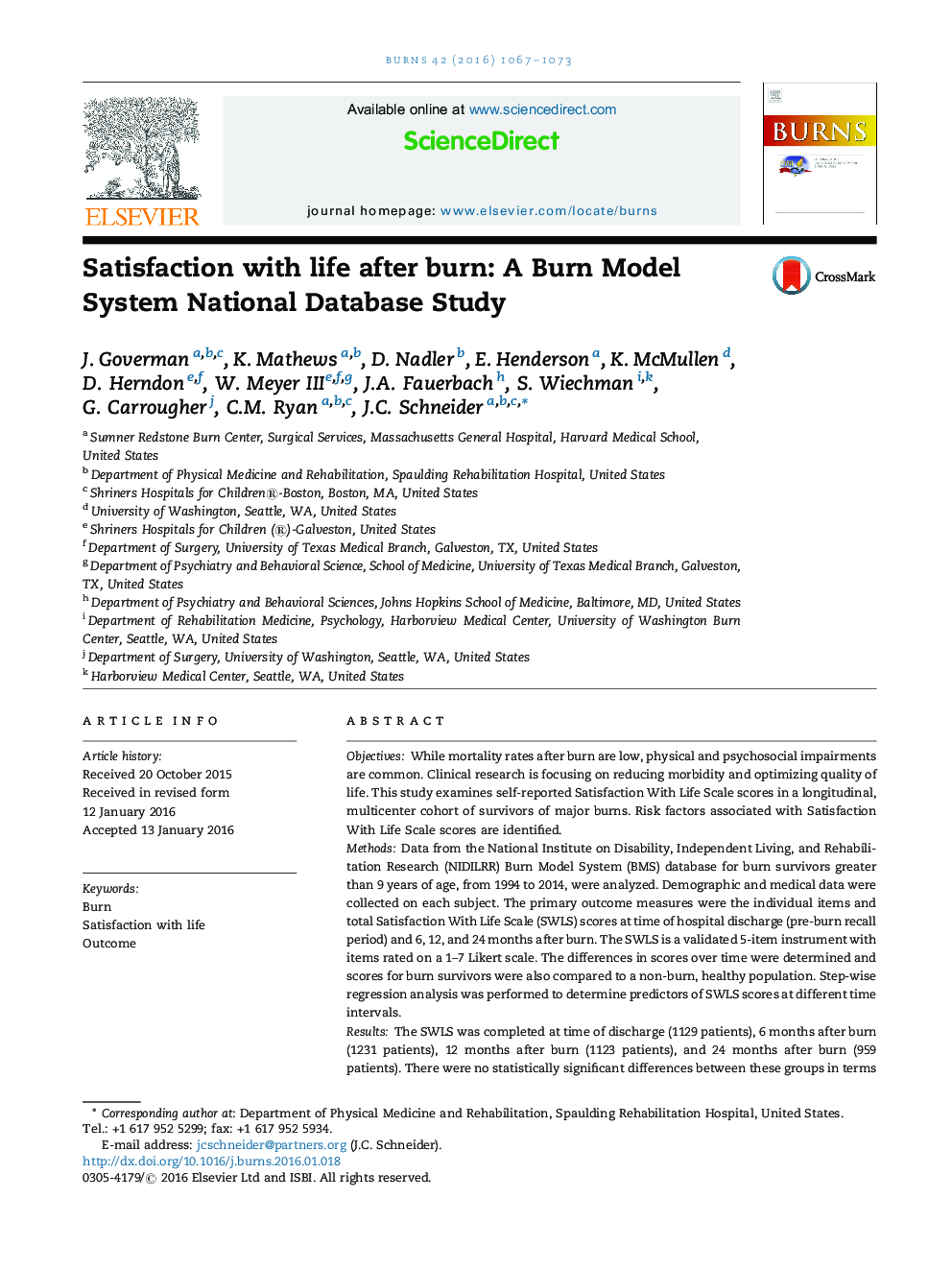| کد مقاله | کد نشریه | سال انتشار | مقاله انگلیسی | نسخه تمام متن |
|---|---|---|---|---|
| 3103993 | 1191638 | 2016 | 7 صفحه PDF | دانلود رایگان |
• Burn and SWLS scores over a two-year time period are investigated.
• SWLS scores for burn survivors were below non-burn patients.
• SWLS scores remained unchanged for at least 2 years after burn.
ObjectivesWhile mortality rates after burn are low, physical and psychosocial impairments are common. Clinical research is focusing on reducing morbidity and optimizing quality of life. This study examines self-reported Satisfaction With Life Scale scores in a longitudinal, multicenter cohort of survivors of major burns. Risk factors associated with Satisfaction With Life Scale scores are identified.MethodsData from the National Institute on Disability, Independent Living, and Rehabilitation Research (NIDILRR) Burn Model System (BMS) database for burn survivors greater than 9 years of age, from 1994 to 2014, were analyzed. Demographic and medical data were collected on each subject. The primary outcome measures were the individual items and total Satisfaction With Life Scale (SWLS) scores at time of hospital discharge (pre-burn recall period) and 6, 12, and 24 months after burn. The SWLS is a validated 5-item instrument with items rated on a 1–7 Likert scale. The differences in scores over time were determined and scores for burn survivors were also compared to a non-burn, healthy population. Step-wise regression analysis was performed to determine predictors of SWLS scores at different time intervals.ResultsThe SWLS was completed at time of discharge (1129 patients), 6 months after burn (1231 patients), 12 months after burn (1123 patients), and 24 months after burn (959 patients). There were no statistically significant differences between these groups in terms of medical or injury demographics. The majority of the population was Caucasian (62.9%) and male (72.6%), with a mean TBSA burned of 22.3%. Mean total SWLS scores for burn survivors were unchanged and significantly below that of a non-burn population at all examined time points after burn. Although the mean SWLS score was unchanged over time, a large number of subjects demonstrated improvement or decrement of at least one SWLS category. Gender, TBSA burned, LOS, and school status were associated with SWLS scores at 6 months; scores at 12 months were associated with LOS, school status, and amputation; scores at 24 months were associated with LOS, school status, and drug abuse.ConclusionsIn this large, longitudinal, multicenter cohort of burn survivors, satisfaction with life after burn was consistently lower than that of non-burn norms. Furthermore mean SWLS scores did not improve over the two-year follow-up period. This study demonstrates the need for continued efforts to improve patient-centered long term satisfaction with life after burn.
Journal: Burns - Volume 42, Issue 5, August 2016, Pages 1067–1073
